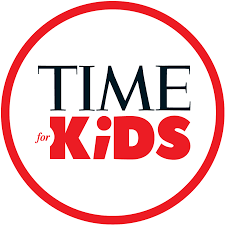Given how polarized and fast-moving the world is, it's hard enough for adults to find news sources for themselves. That task only gets harder if you're a teacher searching for a news app or site for your students. To help you out, our editorial team has looked at dozens of news sites and apps and selected the best for your students.
The picks below all have trustworthy, current, and engaging content, great accessibility and assessment features, and top-notch lesson plans and activities. They'll all build students' reading and media literacy skills and keep them up to date with what's happening in the world.
Please note: Common Sense Education is a nonprofit with a strong commitment to an unbiased, in-depth editorial process. Our ratings and reviews of learning media aren't influenced by developers or funders, and we never receive payments or other compensation for our reviews.
Our selections


Best overall for elementary school

This is an excellent, cross-curricular news source that'll keep kids current and build their thinking skills.

Time for Kids has almost everything we look for in a news source for kids. While there are other options for print and digital magazines as well as sites with current-events lesson materials, none quite do it all at the high level that Time for Kids does. Though it lacks some student tracking features of other tools, Time for Kids' content, especially its awesome lessons and great mix of serious and fun news, is unmatched in both quality and trustworthiness. It's also just designed really well, making it easy for teachers and students to use.


Best overall for middle and high school

Backed by a world-class news team, this stunning free resource can fuel daily topical discussions.

The Learning Network has an unfair advantage. It's backed by the New York Times' staff (and budget!) and has pound-for-pound the most up-to-date, high-quality journalistic content, from articles to photography and videos. The stories span the globe and cover hard-hitting and human interest topics. Every week, teachers will find something to spark classroom dialogue, adapted brilliantly by Learning Network editors to match with students' sensibilities. And don't tell anyone, but the Learning Network gives you a secret back door into paywalled New York Times content. It's an incredible value.
Other recommendations
Best for school or district adoption

While pricey, Newsela has ascended into an all-in-one destination for leveled, non-fiction reading.

Newsela has tons to offer, but it'll cost you (or, should we say, your administrator). How much we're not entirely sure, since it's all based on tailored sales quotes. While some free content is available, it's more of a preview vs. a full experience that teachers can rely on. If your school or district does get you a license, though, Newsela is the only tool on this list that can truly anchor an ELA or social studies classroom. There's tons of content available at five Lexile levels—an industry best. Teachers can also assign out the articles and track students' activities, including writing, quizzes, and annotations.
Great for students with intellectual or developmental disabilities

This a pricey tool but it's packed with a school year's worth of content and handy accessibility features.

While other apps and sites we looked at have accessibility features (e.g., read-aloud modes or text modification tweaks), News2you is the only tool we looked at that develops their content specifically for students with intellectual or developmental disabilities. The heart of this approach is their unique SymbolStix system, which combines text and pictures to help students process content. They do all of this without sacrificing content frequency; News2you puts out one issue a week along with lessons, both available at four complexity levels. Note, though, the content isn't as news-y or trending as other options.
One to watch

The combo of newscasts, articles, and media content offers a deep news literacy approach, but it's lacking supports.

Even though NexGen News hasn't been around nearly as long as the others on this list, it's got a lot going for it and shows tons of promise. If you have fond memories of Channel One and its regular broadcasts made just for students, then NexGen News is worth a look. Every two weeks they provide a youth-led newscast and pair it with some of the best lesson materials in the field. While the newscast, materials, and site aren't quite as polished as the rest of the tools on this list, that might not matter to you if the content really meets your needs.
Compare the tools
|
|
|
|
|
|
|
|---|---|---|---|---|---|
| Grades | K–6 | 7–12 | 2–12 | 2–8 | 6–8 |
| Price | Paid | Free | Free, Paid | Paid | Free to try |
| Privacy | |||||
| Platforms | Web | Web | Web | Web | Web |
| Pros | Supplemental activities build critical thinking and creativity skills. | Daily content and a vast archive. Topics relevant to all content areas. | Sprawling library of high-interest, cross-curricular, adjustable nonfiction texts. | Easy-to-understand symbols and voice options maximize accessibility. | High-quality lessons require very little prep. Youth-hosted news. |
| Cons | Reading supports vary by article. | Not much for younger students. Most valuable in a one-to-one environment. | Needs better search and filtering. A lot sits behind a paywall. | Organization and navigation could be better. Articles lack some critical thinking. | Content comes out only twice a month. Reading level is often too high. |
| Bottom Line | This is an excellent, cross-curricular news source that'll keep kids current and build their thinking skills. | Backed by a world-class news team, this stunning free resource can fuel daily topical discussions. | While pricey, Newsela has ascended into an all-in-one destination for leveled, non-fiction reading. | This a pricey tool but it's packed with a school year's worth of content and handy accessibility features. | The combo of newscasts, articles, and media content offers a deep news literacy approach, but it's lacking supports. |
| Read our review | Read our review | Read our review | Read our review | Read our review |
How We Rate
Our recommendations are based on a research-backed rubric we use to rate apps and websites. Here are just a few sample criteria from this rubric:














